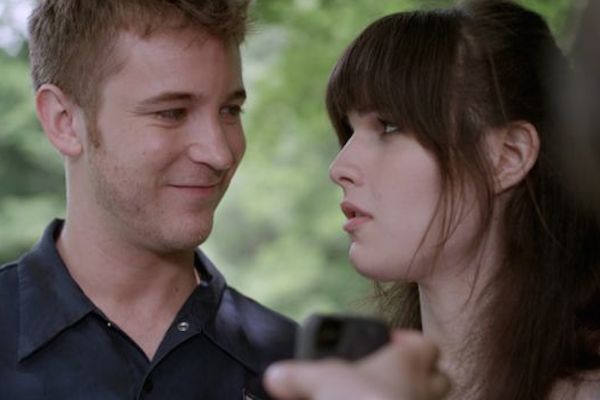
It’s been a long time coming for our transgender brothers and sisters to be represented in a positive light and that’s exactly what Boy Meets Girl does. We are all too familiar that most news coverage we see about the Trans community is reporting on their deaths, particularly of Trans women of color. Even film has historically represented them in a negative light, whether it’s Dallas Buyers Club in which we see the role of a transgendered woman dying of aids, or Boys Don’t Cry in which Hillary Swank plays Brandon Teena whose life is dismantled by the discovery that he was born female. That’s not to mention that these characters are also generally played by cisgender straight people. Thankfully, writer and director Eric Shaffer takes us on an unexpected journey through the life of an independent, strong-willed, creative Trans woman.
The beginning and end of Boy Meets Girl are circuitous with a young Ricky, played by Michelle Hendley, creating a YouTube video about her mother. Hendley was actually discovered by Shaffer through YouTube, perhaps drawing inspiration for the movie. It’s set in present day Kentucky where Ricky works as a barista by day and builds her design portfolio for fashion school by night. While working at the coffee shop, she encounters Francesca (Alexandra Turshen), an engaged, aristocratic, debutante awaiting the return of her fiancé from overseas. There’s an instant affinity between the two which quickly escalates into a love affair. As the affair unfolds, there are myriad layers and perspectives presented to the viewer that will undoubtedly keep one hooked throughout.

It may seem unexpected that this particular sex-positive, romantic comedy would be set in the south, and some may think the concept is a little romanticized. Those of us from more northern, progressive states typically look at the south with caution. However, that’s not to say that accepting communities can and do still very much exist in these states. Turshen explains that they “wanted to remove preconceptions about what a Trans experience in the south might be” and Hendley furthers this by affirming that, “a lot of experiences are similar— like the talks about straight sex versus gay sex, being asked for a tampon—it’s very important for Eric [Shaffer] and me to show a story that was authentic to a trans experience, while Ricky’s life may not be typical for every Trans person.”
Boy Meets Girl capitalizes on the idea of how others react to Ricky from allusions to trials that she’s experienced in her small town to the love and acceptance of her family, friends and acquaintances. Hendley says, “It was of the utmost importance that Ricky isn’t unsure of herself, it isn’t a phase. She’s not discovering herself—it’s about everyone else’s reaction.” Whether it’s regarding her gender identity or sexual identity, Ricky is completely comfortable with who she is. In the very beginning of the movie, it’s made clear that Ricky has only been with men, yet the relationship with Francesca speaks to the notion of sexual fluidity, a concept many people don’t seem to acknowledge. Turshen notes, “What I would hope from this film is that as a collective identity, it’s important for the growth and evolution (including myself) that we need to keep making room for the multiplicity of ways of identifying and interacting with the world.”
If you’re looking for an uplifting, inspiring movie, then don’t hesitate to watch Boy Meets Girl. It has won 11 awards from the San Diego FilmOut festival including Best Actress, Best Supporting Actress, and Best Narrative. This movie captures the viewer from the beginning and emulates the idea, which both Hendley and Turshen agree, that “if you maintain an open heart and go with your gut, it will speak volumes.”


